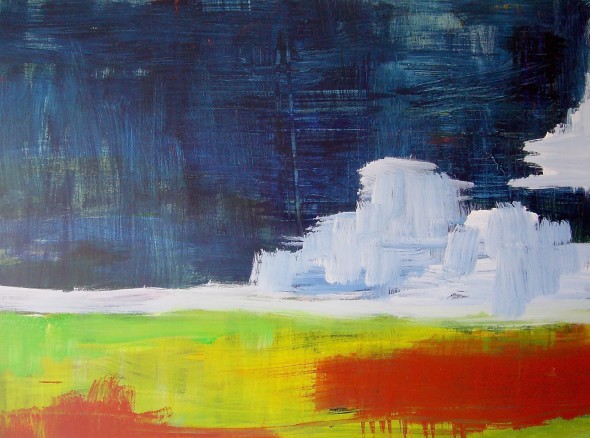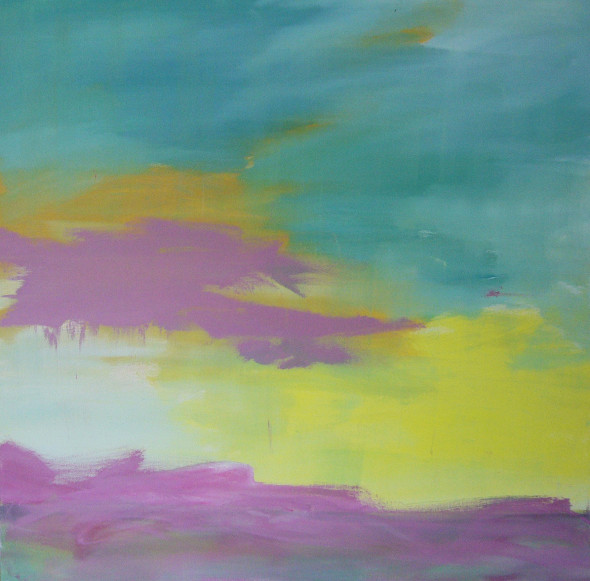There is no standard method in painting to determine if a piece of art is ‘done’ or ‘not done’; no thermometer, measuring stick or time clock to signal the completion of the task of creating.
There is always the question, how can you know when ‘creating’ is complete for any work of art or innovation?
 Sometimes when painting, I stop midway through the early steps of the process, distracted by colour and form on the canvas, pleased with the aesthetic effect and I think, “could this painting be done?”
Sometimes when painting, I stop midway through the early steps of the process, distracted by colour and form on the canvas, pleased with the aesthetic effect and I think, “could this painting be done?”
This usually happens during the initial stages of painting called “underpainting” and “blocking”.
Blocking is used when first setting up the basics of a painting. At this stage, general colours, tones and shapes are laid onto the canvas in ‘blocks’ to give a general sense of the relation and weight of the objects and colours that will make up the finished painting. The blocking process is intentionally un-detailed as much of the ‘blocked-in’ imagery will be painted over as work on the painting progresses.
 The academic voice in my head says ‘never leave a canvas in an unfinished (underpainted or ‘blocked-in’) state’, but the aesthetic (rule-breaker) voice says, ‘why not?’
The academic voice in my head says ‘never leave a canvas in an unfinished (underpainted or ‘blocked-in’) state’, but the aesthetic (rule-breaker) voice says, ‘why not?’
And so I wonder (every time the paint is in-hand), ‘what am I trying to prove when I pick up a paintbrush?’
Do I need to always follow-process (follow the rules) and see a painting through to its end-potential; past the pleasing colour-block stage just because that’s the way it’s (always been or ‘should be’) done? Or because (who knows) what other, more wondrous thing I might create if I DON’T stop?
Or should I halt the process -? Hang the painting, sit, enjoy the colour, appreciate the form.
And finally stop wondering what on earth I, or my paintings are trying to prove.